Results 8,321 to 8,330 of 12094
Thread: Anandtech News
-
06-25-18, 10:10 AM #8321
Anandtech: Cooler Master Readies New Thermal Compound with 11 W/mK Conductivity
Cooler Master is prepping to release its new thermal compound that will have the highest conductivity among all thermal pastes/greases ever released by the company. The new paste is aimed to enable Cooler Master’s clients and overclockers to improve their thermal results.
The manufacturer says that the new paste will have a 11 W/mK thermal conductivity across a wide range of temperatures and will come in a new packaging for easier application. The new thermal compound from Cooler Master does not even have a brand name as of yet.
11 W/mK is higher than 8 to 9.5 W/mK conductivity provided by thermal compounds from Cooler Master and other popular makers of coolers. However, this figure is considerably lower when compared to 73 W/mK offered by liquid metal-based compounds, such as those from Thermal Grizzly, or liquid metal, but liquid metal also has the side effect of perminently bonding the cooler to the CPU.
Cooler Master already has one thermal compound with an 11 W/mK conductivity, the MasterGel Maker, which uses nano-diamond at a good viscocity for spreading. The company yet has to disclose the differences between the MaterGel and the new compound.
Buy Cooler Master MasterGel Maker on Amazon.com
Want to keep up to date with all of our Computex 2018 Coverage? 
Laptops
Hardware
ChipsFollow AnandTech's breaking news here!
More...
-
06-25-18, 12:02 PM #8322
Anandtech: New Realtek PCIe 3.0 x4 NVMe Controllers: RTS5762 & RTS5763DL up to 3.5 GB
The market of SSDs is expanding rather rapidly, which encourages new companies to enter the scene. Realtek introduced its first SSD controller two years ago targeting primarily entry-level PCIe drives. This controller has received a lukewarm welcome from makers of SSDs, which was not a surprise as the market is quite packed. As a result, the company changed strategy and its new RTS5762 and RTS5763DL controllers that are aimed at higher-performance models. Realtek demonstrated both products at Computex.
The RTS5762: 'Worldwide Fastest Client PCIe M.2 SSD Controller'
The Realtek RTS5762 will be the company’s flagship controller designed for high-end SSDs. This chip is NVMe 1.3 compliant, features 8 flash channels and supports various types of 3D TLC and 3D QLC NAND flash memory, thus featuring robust LDPC-based ECC methods to ensure proper endurance for SSDs. Realtek does not want to disclose all the details about the RTS5762 and the RTS5763DL controllers just now, but one of the representatives for the company in its booth said that the said chips support up to 150 bits/1 KB ECC. Meanwhile, when asked about processing cores the controllers feature, the rep said that the company uses its own custom cores without elaborating.
When it comes to performance, Realtek says that SSDs powered by the RTS5762 will deliver up to 3500 MB/s sequential read speeds as well as up to 3000 MB/s write speeds. To put it into perspective, Samsung’s flagship 970 PRO drive offers up to 3500 MB/s reads and up to 2700 MB/s writes (when pseudoSLC caching is used), based on official numbers (for real world numbers check out our review). It is unclear what kind of memory Realtek used to hit its targets, but at the show the company demonstrated an RTS5762-powered drive featuring Toshiba’s BICS3 64-layer 3D TLC NAND.
The RTS5763DL: The New Mainstream SSD Controller from Realtek
In addition to the high-end controller, Realtek plans to offer a cheaper RTS5763DL controller aimed at lower-end SSDs without DRAM. This chip is also NVMe 1.3 compliant, has four NAND channels and, just like its bigger brother, also supports 3D TLC and 3D QLC memory. It is noteworthy that the RTS5763DL fully supports AES256 encryption (just like its bigger brother), which is a feature not often found with cheaper controllers.
Despite being an inexpensive controller, the RTS5763DL comes with a PCIe 3.0 x4 interface and therefore has no bottlenecks on this side of things, unlike its predecessor. Sequential read speeds of drives based on the RTS5763DL come in at 2150 MB/s, whereas sequential write speeds come in at 1474 MB/s (when pSLC caching is used), which is more or less in line with Silicon Motion’s SM2263XT-powered drives. While these numbers may not impress if compared to those offered by the RTS5762 and other high-end models, it should be noted that today’s entry-level PCIe SSDs based on Realtek’s RTS5760 can barely hit 1000 MB/s, thus competing successfully only against SATA drives that top out at 560 MB/s.
At present various makers of SSDs are evaluating Realtek’s controller solutions and if they find the new chips good enough, expect actual drives featuring the RTS5762 and RTS5763DL controllers to hit the market sometimes next year. Keep in mind though that the market of turnkey SSD platforms is very crowded and it will take some time for Realtek to win business from companies like Silicon Motion and Phison.
Gallery: Realtek Aims High-End SSDs with RTS5762 & RTS5763DL Controllers: Up to 3.5 GB/s





Related Reading:
Want to keep up to date with all of our Computex 2018 Coverage? 
Laptops
Hardware
ChipsFollow AnandTech's breaking news here!
More...
-
06-25-18, 01:44 PM #8323
Anandtech: PLDS Readies EB1: A Slim External Ultra-HD Blu-Ray Player (and Burner)
In our world, Lite-On is known usually as the maker of Plextor-branded SSDs, but Philips & Lite-On Digital Solutions Corp. (PLDS), a joint venture between Philips Electronics N.V. and Lite-On Technology Corp., is one of the world’s largest makers of optical disc drives that produces rather unique products. At Computex, PLDS demonstrated its upcoming EB1 external ODD that supports Ultra HD Blu-ray playback.
The Lite-On EB1 UltraSlim Portable BD Writer can playback and burn all contemporary types of optical discs, including CDs, DVDs, and BDs. In addition, the product has everything that is required to playback Ultra HD Blu-rays, making it the word’s second UHD BD-capable external ODD after Pioneer’s BDR-XD06J-UHD. The key advantage of the EB1 over its rival is dimensions: the drive promises to be considerably slimmer and lighter, thus matching ultra-thin laptops.
The EB1 from Lite-On requires a USB 3.0 connection, so the company is debating whether it needs to sell it with a USB Type-A or a USB Type-C cable. Meanwhile, since the product is still in development, Lite-On does not disclose all of its specs just yet, but typically external ODDs burn discs rather fast these days, so it is reasonable to expect up to 6X speed for SL and DL BD-R media. Obviously, the EB1 ODD will support Lite-On’s buffer underrun protection and other modern technologies that PLDS has.
Keep in mind that to playback an Ultra HD Blu-ray disc on a PC, in addition to an appropriate ODD your computer must feature an Intel processor supporting SGX technology (activated in BIOS) and the UHD 630 iGPU, an HDMI 2.0a output with HDCP 2.2, Windows 10 OS and CyberLink’s PowerDVD 17 software (read more here and here).
The price of the Lite-On EB1 has not been finalized, but the company is looking at a $80 – $100 range, making it cheaper than the Pioneer drives mentioned earlier. As for availability timeframe, expect it to hit the market early next year.
Buy Pioneer BDR-XD06J-UHD on Amazon.com
Related Reading:
- A Budget Home Theater & PC Setup: 4K, HDR, UHD Blu-ray, and More
- Pioneer Announces Ultra HD Blu-ray Supporting BDR-S11J Drives
Gallery: PLDS Readies EB1 Ultra-Slim External Ultra HD Blu-Ray-Capable Disc BurnerWant to keep up to date with all of our Computex 2018 Coverage? 
Laptops
Hardware
ChipsFollow AnandTech's breaking news here! 

More...
-
06-25-18, 01:44 PM #8324
Anandtech: AIC Shows Dual NF1 to U.2 SSD Adapter
After the official announcement last week of Samsung’s new 8TB NF1 drive, I went back through my Computex photo kit to dig out a couple of images I snapped at AIC’s booth. AIC, a sizeable server OEM, was one of the first to show a storage server (with ADATA) targeted at 5G with Samsung as a customer. But at the booth at Computex, I bumped into a small add-in for current U.2 enabled servers.
Each one of the NF1 drives is within its own bracket that can be removed easily from the drive, and the backplane of the U.2 conversion drive we were told lets the system see each drive as a separate drive in the system (U.2 is essentially PCIe, so as long as it can support the correct bifurcation modes). We were told that despite each NF1 drive being a PCIe 3.0 x4 drive, because U.2 only supports four lanes, each drive will be knocked down to a x2 drive.
One interesting thing to note is that the traces from the adaptor are not simple straight lines: we saw curved traces like this previously with the first generations of Thunderbolt controllers several years ago.
Obviously the combined U.2 drive is longer than a standard U.2 slot in a server, but AIC didn’t touch on how that issue was approached. It might mean drives hanging out of servers, or new servers built with U.2 slots for NF1 in mind.
Buy Samsung 970 Pro 512 GB on Amazon.com
Gallery: AIC Shows Dual NF1 to U.2 SSD AdapterWant to keep up to date with all of our Computex 2018 Coverage? 
Laptops
Hardware
ChipsFollow AnandTech's breaking news here! 

More...
-
06-25-18, 03:33 PM #8325
Anandtech: Alphacool Eisblock GPX: A Waterblock with Vertical and Horizontal Connecto
One of the unexpected discoveries on the showfloor at Computex this year was a waterblock from Alphacool. As part of the Eis (‘Ice’) family, the Eisblock GPX is a waterblock for the biggest cards from NVIDIA and AMD, but features one important action: the ability to adjust the waterblock from connecting vertically or horizontally.
When connecting GPU waterblocks, the direction of the connectors will assist in the total volume that the build can take, or when connecting multiple regions into a single loop, will assist in also keeping the bulk down. Up until this point, users had to buy waterblocks with the direction of the pipes fixed to each block, meaning that the type of block had to be planned in advance. With the Eisblock GPX, Alphacool is hoping to make that a thing of the past: buy one block and it can do both.
The section here with the in/out holes for tubing can be replaced such that the water flow going in and out can be in line with the card (horizontal) for best flow, or perpendicular (vertical, as shown) for when multiple cards are in the same loop. To add to everything, the block has RGB LEDs for when a user peers in to the case to see the water flow.
Buy Alphacool Eisblock GPX-N on Amazon.com
At current, the Eisblock GPX is only built for Titan-level and Vega cards. There are no plans to bring it down to the GTX 1070/1080/Ti level, despite the market being considerably bigger for those GPUs. The GPX-N version for Titan cards currently retails at $163.
Gallery: Alphacool Eisblock GPX: A Waterblock with Vertical and Horizontal ConnectorsWant to keep up to date with all of our Computex 2018 Coverage? 
Laptops
Hardware
ChipsFollow AnandTech's breaking news here! 



More...
-
06-25-18, 03:33 PM #8326
Anandtech: An EpicGear Turnkey PC Gaming Café: Beam Me Up Scotty
One of the phrases I no longer hear in this industry is ‘Cyber Café’. A remnant of the past, at least here in the west, a gaming or cyber café was a place where a user could buy some PC time and play the best titles of the time with friends, either in the same room or across the internet. It offers an inexpensive way to get into gaming with middle-end kit and comfy seats without shelling out for a full system. However, these venues are now few and far between in North America and Europe, but business is still going strong in Asia. We see this with gaming café products in the market from motherboard and GPU manufacturers, as these venues can hold 200+ machines at once and generate a lot of foot traffic day in and day out. These places allow users to book seats from home, and even order food from a kitchen to arrive at the desk you are playing at. It really is a world away from what most of us are used to on this side of the world.
Now I mention all this because we got a surprise when we hit the GeIL / EpicGear booth at Computex this year. It was one of the more impressive looking booths of the show just because of the design: it felt totally futuristic and sci-fi, and then I learned why they designed the booth in this way. The goal here for EpicGear is to provide all-in-one turnkey solutions for cyber cafés that can be deployed in days/weeks, rather than months.
Around the booth were gaming machines set up with monitors and chairs, and spaces to act like a bar or to serve food. Call it Star Trek-esque or Guardians of the Galaxy-a-like, but it does look like something ripped out of a science fiction universe.
It was unclear if the goal of these turnkey solutions was to provide the PCs as well, but our rep stated that the goal would be to work with the client, map the space, and provide almost everything needed to get up and running with this style of venue within three weeks from agreement to revenue. This includes the desks, wall modules, lights, etc. I know a couple of other journalists saw the setup and also agreed that it is a shame we don’t have this sort of thing over here.
Buy GeIL DDR4-2400 16GB on Amazon.com
Gallery: An EpicGear Turnkey PC Gaming Café: Beam Me Up ScottyWant to keep up to date with all of our Computex 2018 Coverage? 
Laptops
Hardware
ChipsFollow AnandTech's breaking news here! 




More...
-
06-26-18, 09:21 AM #8327
Anandtech: Silverstone Launches NJ450-SXL Power Supply: Fanless SFX-L, 80Plus Platinu
Silverstone has expanded their Nightjar family of power supplies with the addition of a new SFX-L class sized silent PSU, the NJ450-SXL. The new PSU, according to Silverstone, is the first ever fanless SFX-L design. The 450W PSU is said to use premium components, achieves an 80 Plus Platinum level of efficiency, and can output nearly 38A on the +12V rail, all in a fanless 0 dBA aluminum chassis measuring in at 5.12” x 2.5” x 4.92” (WxHxD).
The black chassis is made out of an extruded aluminum shell with fins running front to back on all four panels, serving as a heatsink to remove heat away from the internal components. The other faces of the PSU contain the connectors for outputs and the power plug & on/off switch respectively. The unit does not appear to be vented so the integrated heatsink/chassis will have to do all the work getting the heat out of the device. That said, it is rated to deliver 100% load 24/7 while operating up to 40C.
The Nightjar NJ450-SXL is 100% modular using short flat cables which can make for an easier attempt at hiding the wires. Outside of the 4-pin EPS and four 6/8-pin PCIe connectors measuring in at 400mm/~15-inches, the rest of the cables are 300mm/11.8-inches in length so these may not reach in the largest of cases. Additionally, the NJ450-XSL includes eight SATA connectors, three 4-pin Molex connectors, and a 4-pin legacy floppy connector (100mm length). The power supply can support a single high-end video card or multiple mid-range cards with its connections.
Buy Silverstone NJ520 Power Supply on Amazon.com
The output on the all-important 12V rail is 37.5A/450W, which is enough to handle many systems, especially HTPC or SFF systems that may not need as much horsepower as other systems. Silverstone has a published GPU support list stating users shouldn’t have an issue powering a PC using even top-of-the-line cards like an NVIDIA GeForce GTX 1080 Ti or AMD Vega 64.
A warranty period isn’t currently listed for the NJ450-XSL but its older cousin, the NJ520 is warranted for three years. The official product page does not provide pricing or availability information. Due to the nature of the unit itself, an 80 Plus platinum SFX-L form factor power supply, it will likely fetch a premium.
Related Reading:Power Specifications of the Silverstone NJ450-XSL 450W
(Rated @ 450W, 40°C)AC INPUT 90 - 264 VAC, 47 - 63 Hz RAIL +3.3V +5V +12V +5Vsb -12V MAX OUTPUT 16A 15A 37.5A 2.5A 0.3A 80W 450W 12.5W 3.6W TOTAL 450W Connectors 1 x 24/20-pin motherboard connector (300mm)
1 x 8/4-pin EPS/ATX12V connector (400mm)
4 x 8/6-pin PCIe connector (400/150mm x2)
8 x SATA connector (2 x 300/200/100/100mm)
3 x 4-pin Molex connector (300/200/200mm)
1 x 4-pin Floppy connector (100mm)Protections Over Current
Over Power
Over Voltage
Short CircuitForm Factor SFX-L 5.12" x 2.5 x 4.92" (WxHxD) Cooling System Fanless thermal solution MTBF 100,000 hours - EVGA's Next-Gen Power Supply for SFX: Supernova 650GM
- Corsair Introduces New SF Series and Vengeance Series Power Supplies
- Going Big: EVGA's SuperNova 2000W G+ Power Supply
- ASUS ROG Goes For Power Supplies: ROG THor 1200W Platinum
- FSP Demonstrates Hydro PTM+ 1200 W: a Liquid-Cooled PSU with RGB LEDs
- CES 2016: Deepcool’s Gamer Storm brand Exhibits Water Cooling for a Power Supply
- FSP Dagger 500W and 600W SFX PSUs Come To Market: From $99 with 80Plus Gold?
More...
-
06-26-18, 11:06 AM #8328
Anandtech: PNY Preps External Elite-X Portable SSD with USB-C 3.1 Interface: Up to 80
PNY demonstrated its new external SSD at Computex earlier this month. The new Elite-X Portable SSD uses a USB 3.1 Gen 2 interface and a USB Type-C connector, thus providing higher performance when compared to the company's existing portable drives.
PNY’s Elite-X Portable SSDs will be available in 240 GB, 480 GB, and 960 GB configurations. The manufacturer specs the drives for up to 800 MB/s sequential read speed, which indicates that there is an SSD a PCIe 3.0 interface inside that communicates with the host via a PCIe-to-USB bridge (ASMedia’s first-gen bridges could barely hit 10 Gbps). Keeping in mind that PNY specifically chose USB Type-C instead of Thunderbolt to maintain compatibility with Apple’s MacBooks and other ultra-thin laptops with 5 Gbps USB 3.0 connectors, 800 MB/s does not really seem as a major performance bottleneck of the drive.
The manufacturer does not explicitly disclose what drive it uses is inside the Elite-X Portable SSD. Meanwhile considering the fact that PNY works closely with Phison, it is highly likely that the Elite-X Portable SSD uses a Phison PS5008-E8 controller as well as Toshiba’s BICS 3D NAND.
Since the combination of Phison’s PS5008-E8 and Toshiba’s 3D NAND is relatively widespread in the industry, PNY will not have to spend a long time validating the work of the design. Therefore, expect the Elite-X Portable SSDs to hit the market in the coming months. Prices will depend on multiple factors, but expect them to be comparable to the current-generation PNY Elite Portable SSDs: between $90 and $280.
Want to keep up to date with all of our Computex 2018 Coverage? 
Laptops
Hardware
ChipsFollow AnandTech's breaking news here!
More...
-
06-26-18, 10:48 PM #8329
Anandtech: Qualcomm Announces Snapdragon 632, 439 and 429 - Expanding the Low-Mid-tie
A month ago we saw Qualcomm release a new “upper mid-range” SoC with the announcement of the Snapdragon 710 – the emphasis was on the fact that this was a new market tier aiming slightly below the top-tier flagship chipsets. Today, we’re seeing Qualcomm expand the traditional mid-tier and also what can be considered the low-end for smartphone devices. The Snapdragon 439 and 429 follow in the footsteps of the 435 and 425 and bring FinFET to the low-end; the Snapdragon 632 is more akin to the Snapdragon 652 as it’s now the first time we see big cores brought down to the lower mid-tier successor to the Snapdragon 630.
Starting off with the Snapdragon 632 the new chipset is positioned as a successor to the Snapdragon 630. The 600 series suffered from quite a bit of naming confusion as we saw very large performance differences between the 65x and 66x series and the lower numbered ones such as the Snapdragon 630, 615 and 617 – this was largely due to the fact that the lower 600 series SoCs were missing the processing power of larger “big” CPU microarchitecture cores, while the 650 and up were effectively positioned as more expensive tiers.New 2018 Mid & Low-End Snadpragons SoC Snapdragon 632 Snapdragon 439 Snapdragon 429 CPU 4x Kryo 250 (CA72?)
@ 1.8GHz
4x Kryo 250 (CA53)
@ 1.8GHz4x A53 @ 1.95GHz
4x A53 @ 1.45 GHz4x A53 @ 1.95 GPU Adreno 506 Adreno 505 Adreno 504 Modem "X9 LTE" Cat. 7/13300Mbps DL 150Mbps UL
4x10MHz C.A.(DL & 2CA UL)"X6 LTE" Cat. 4/5
150Mbps DL 75Mbps UL
2x10MHz C.A.
(DL)Camera/ISP Dual ISP
24MP / 13+13MPDual ISP
21MP / 8+8MPDual ISP
16MP / 8+8MPMfc. Process FinFET
The Snapdragon 632 now continues this lower-tiered positioning within the 600 series, but brings for the first time the performance benefit of big cores to this price segment. We find 4x Kryo 250 up to 1.8GHz – Qualcomm didn’t confirm what CPU this is based on but looking at the CPUID of an unannounced device it matched the Cortex A72 and this would also make sense given the lower Kryo 2xx naming scheme. The big cores are paired with 4x Kryo 250’s – but again we’re effectively talking about Cortex A53 cores as the little cores in the efficiency cluster.
The Snapdragon 439 and 429 are direct successors to the 435 and 425. The S435 is a 8x A53 setup with a performance cluster going up to 1.95GHz while the second efficiency cluster goes up to 1.45GHz. The S429 is a simple single-cluster with 4x Cortex A53’s up to 1.95GHz and comes with a more updated Adreno 504 over the 425’s older Adreno 308 with the largest quoted performance improvement of up to 50%.
One of the most important characteristics of these new low-end SoCs is however that they’re manufactured on FinFET nodes – Qualcomm didn’t specify exactly the foundry or exact node but we’re likely talking about 14LPP or a 16FF variant, with the possibility of Qualcomm also third-sourcing these from UMC as well. This marks a generational shift as we see Qualcomm effectively have completed a total transition to FinFET products across its whole mobile SoC product line.
A large commercial advantage of the new chips is their design compatibility; the Snapdragon 632, 439, 429 are software compatible with each other and with the existing 626, 625 and 450 platforms. Furthermore the 632 is pin compatible with the 626, 625 and 450, and the 439 and 429 are pin compatible with each other. The software compatibility means less resource investment on the part of OEMs and accelerated time-to-market for devices. In particular what seems to be very interesting here is the 632 being pin compatible with several older chips – It would be great to see OEMs be able to release quick refreshes of their devices with the new chip given that it’ll bring large performance improvements thanks to the new big CPU cores.
Overall the new mid- and low-end Snapdragons bring a generational improvement thanks to Qualcomm’s total switch to FinFET nodes across all of its line-up. The new SoC platforms are quoted be used in commercial devices released in the second half of 2018, which essentially means very soon.
More...
-
06-27-18, 06:39 AM #8330
Anandtech: Qualcomm Announces Snapdragon 2500 Wearable Platform For Kids Watches
Today among the announcements of then new mid- and low-end SoC lineup Qualcomm also announced a new wearable platform dubbed the Snapdragon Wear 2500.
We don’t have many details on the platform and just interpreting what’s on the press release- but what seems to be happening here is that we’re looking at a new platform with supporting IC rather than a new SoC succeeding the Snapdragon 2100. In terms of disclosed specifications, the SW2500 matches the SW2100 as it uses a quad-core Cortex A7 as CPUs and uses an X5 modem.
The interesting thing about it is the way that Qualcomm describes the improvements – notably the 14% improved battery life of the platform. This seems to have been achieved by a new PMIC that reduces the quiescent current of the system when the SoC is sleeping. The new power amplifiers are said to improve peak power efficiency by 20%. The new power delivery is also noted to be 38% smaller than the predecessor which should allow vendors to optimise in terms of system PCB size and thus device dimensions.
The BSP (Board support package) provided by Qualcomm notably doesn’t outright run Android Wear, but rather an optimised version of Android O that is aimed at fitting the lower 512MB footprint and also had further software optimisations in terms of power management to shut off software components when not needed.
Given that Qualcomm is marketing this new platform for the kid watch segment, it’s likely that this is not the overdue “true” successor to the Snapdragon Wear 2100 that we’d be hoping for. While we’re awaiting confirmation, it also seems that the SoC on the new platform is the same one used in the 2100 so naturally the improvements are solely on the side of the supporting ICs such as the PMIC and RFFE, which would be a bit disappointing given the new naming for the platform.
The Snapdragon Wear 2500 is sampling right now and expected to come to market in the coming quarter, with Huawei expected to be the first company to come to market with a kids watch based on the platform.
More...
Thread Information
Users Browsing this Thread
There are currently 10 users browsing this thread. (0 members and 10 guests)




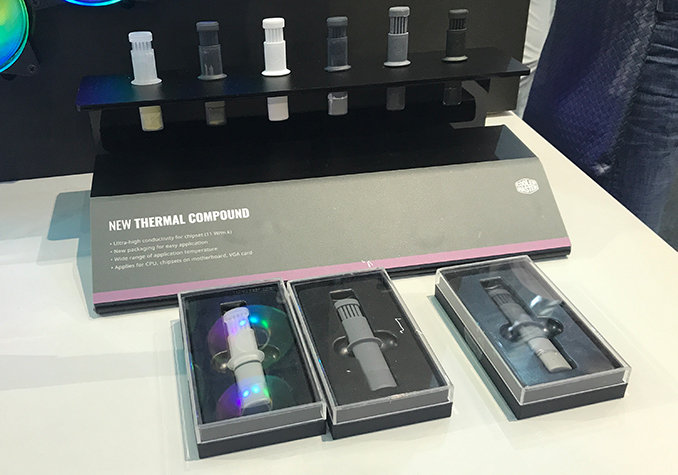
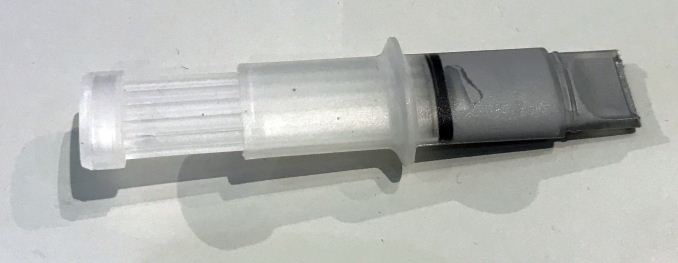


 Quote
Quote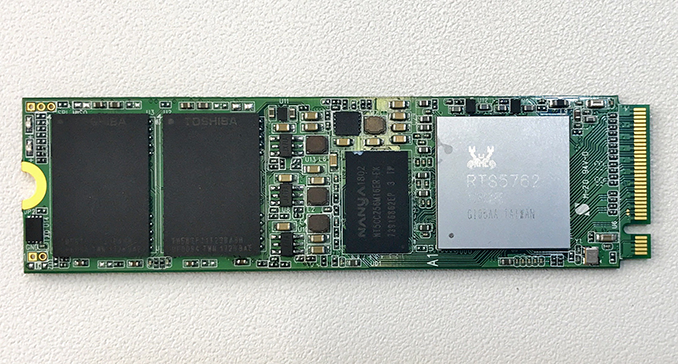
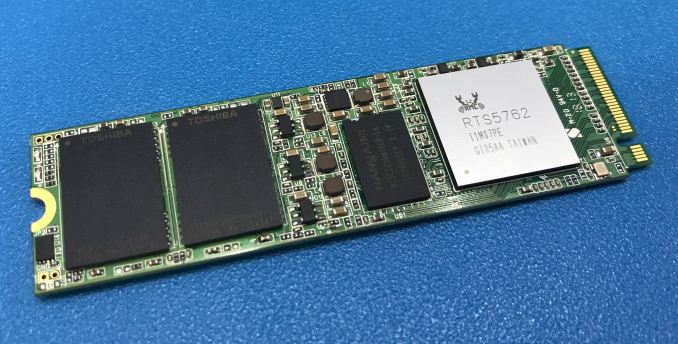
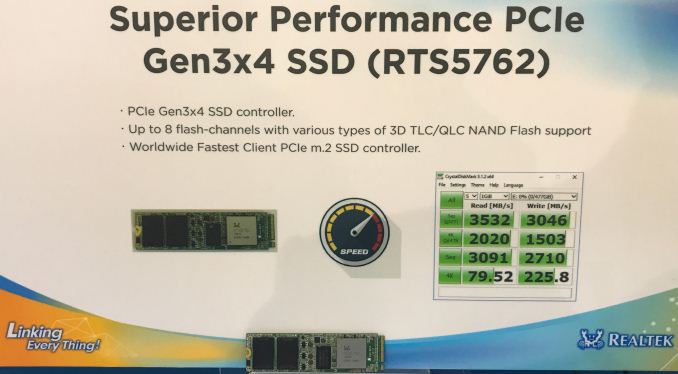
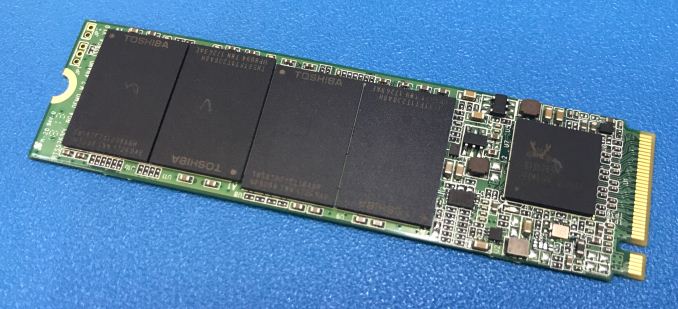

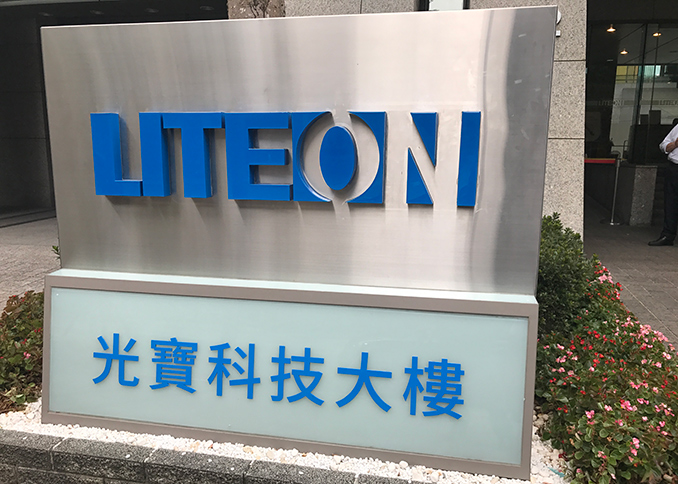
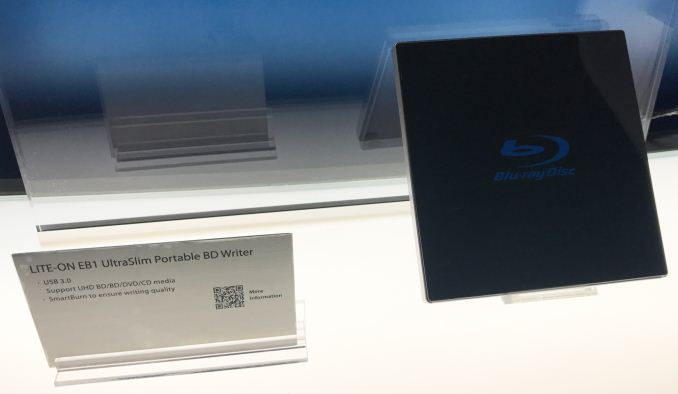

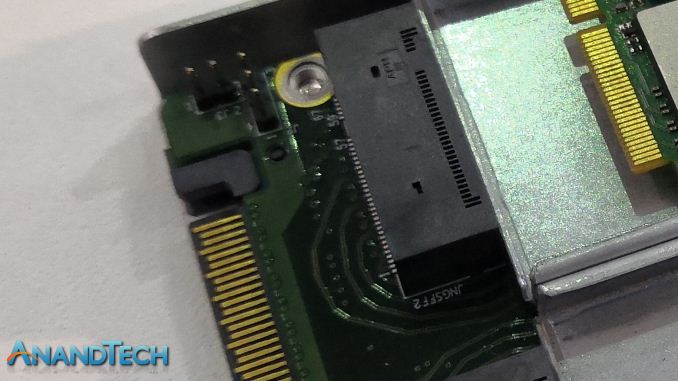
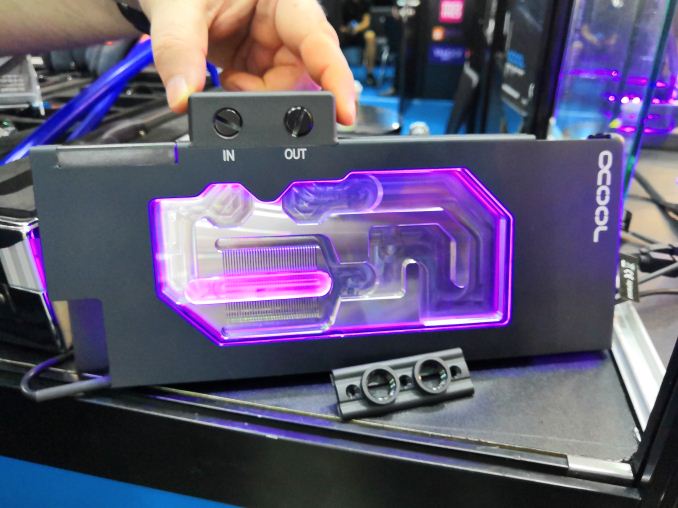

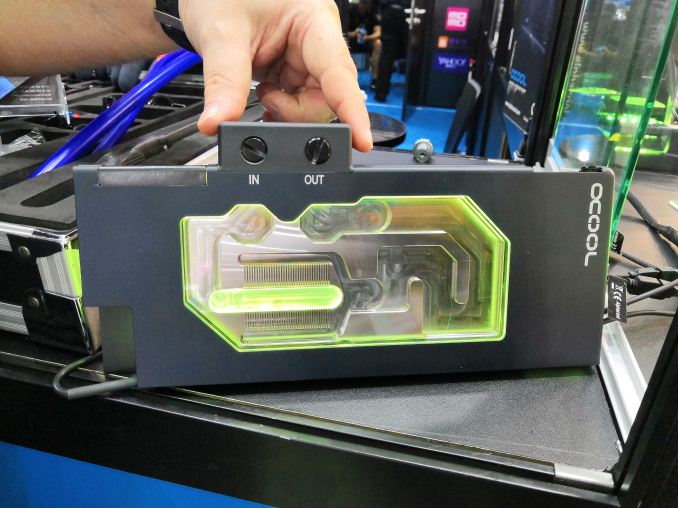
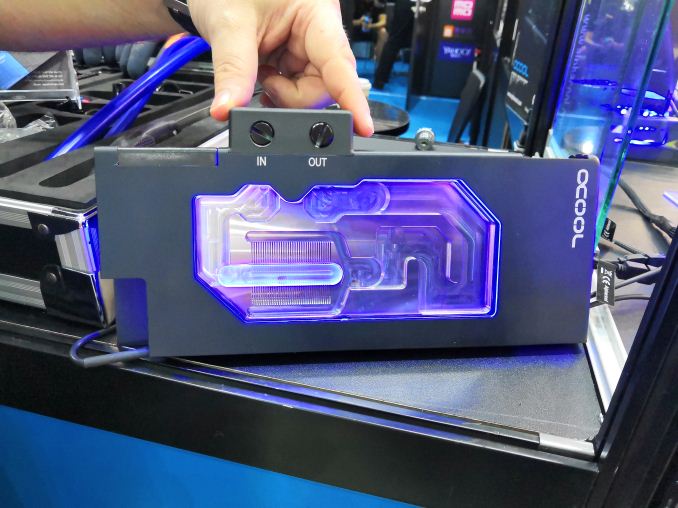

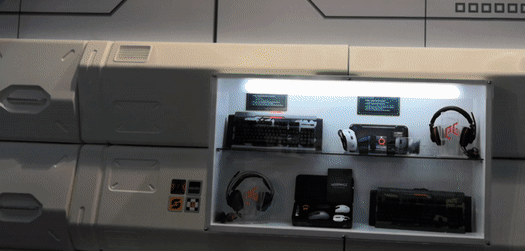
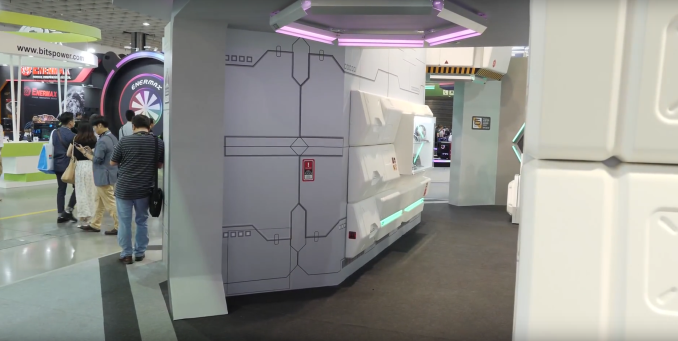

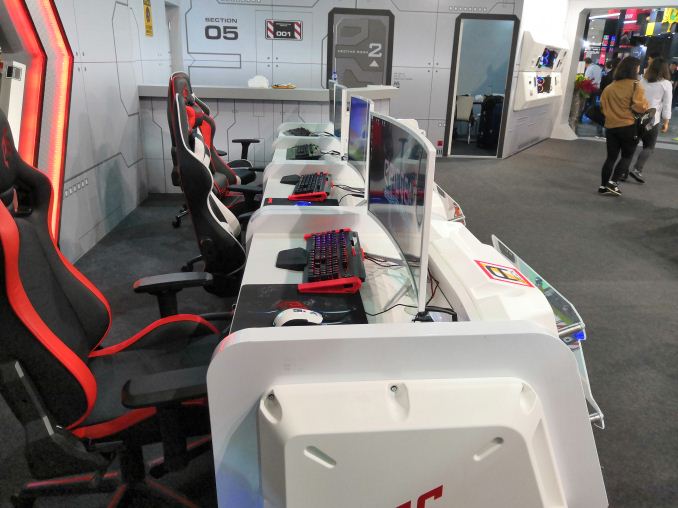

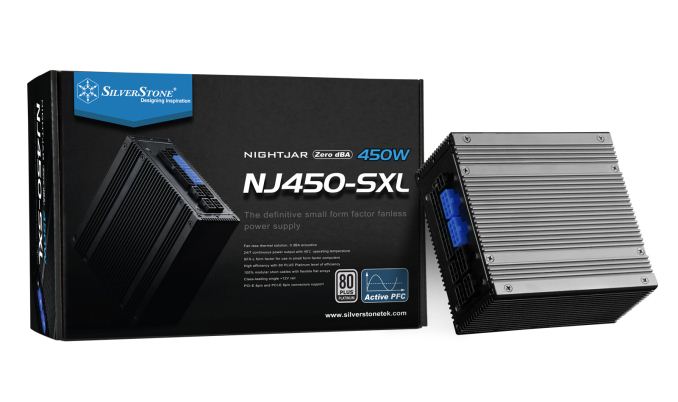
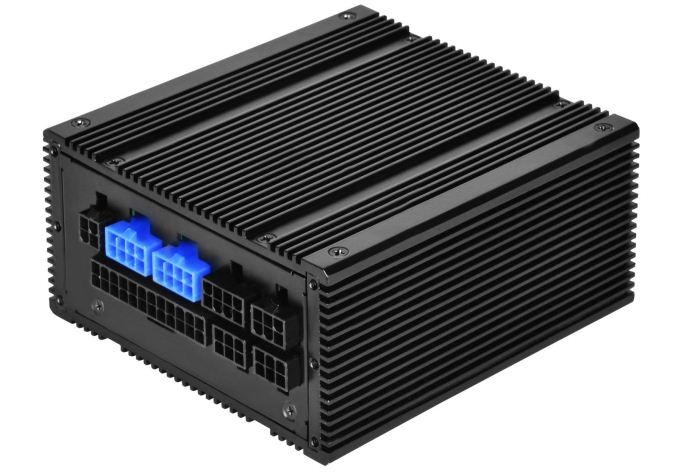
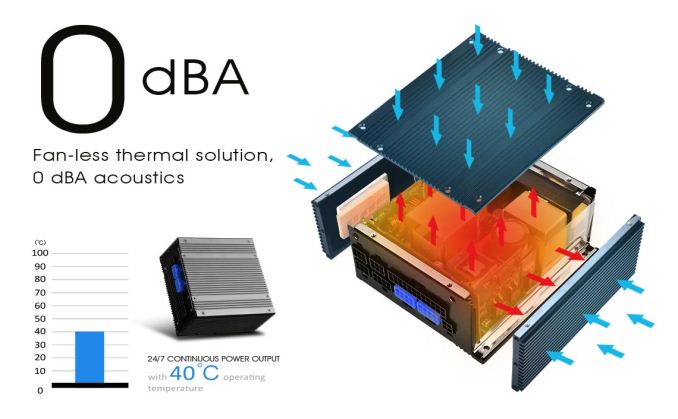
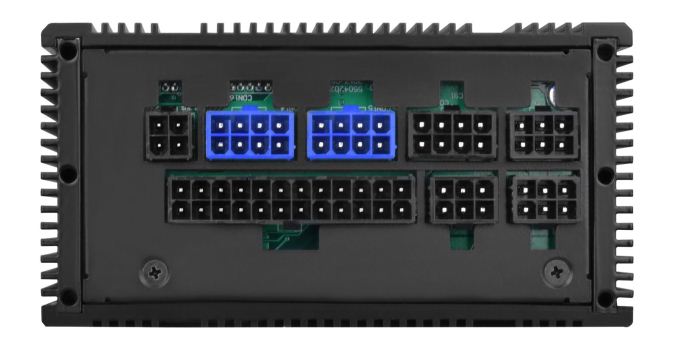
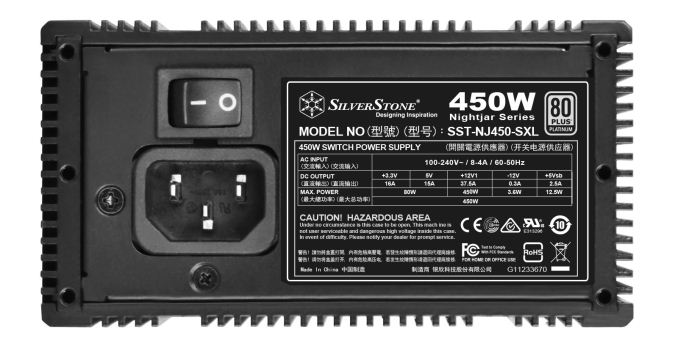
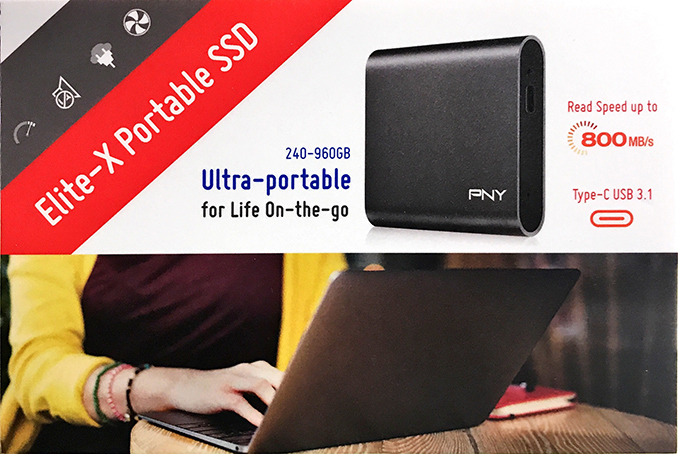
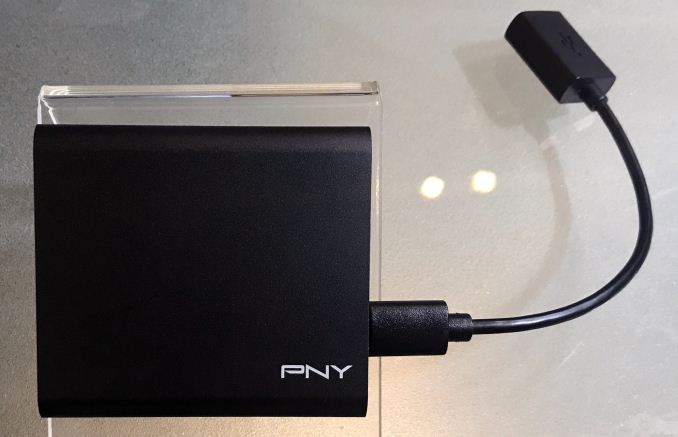




























Bookmarks